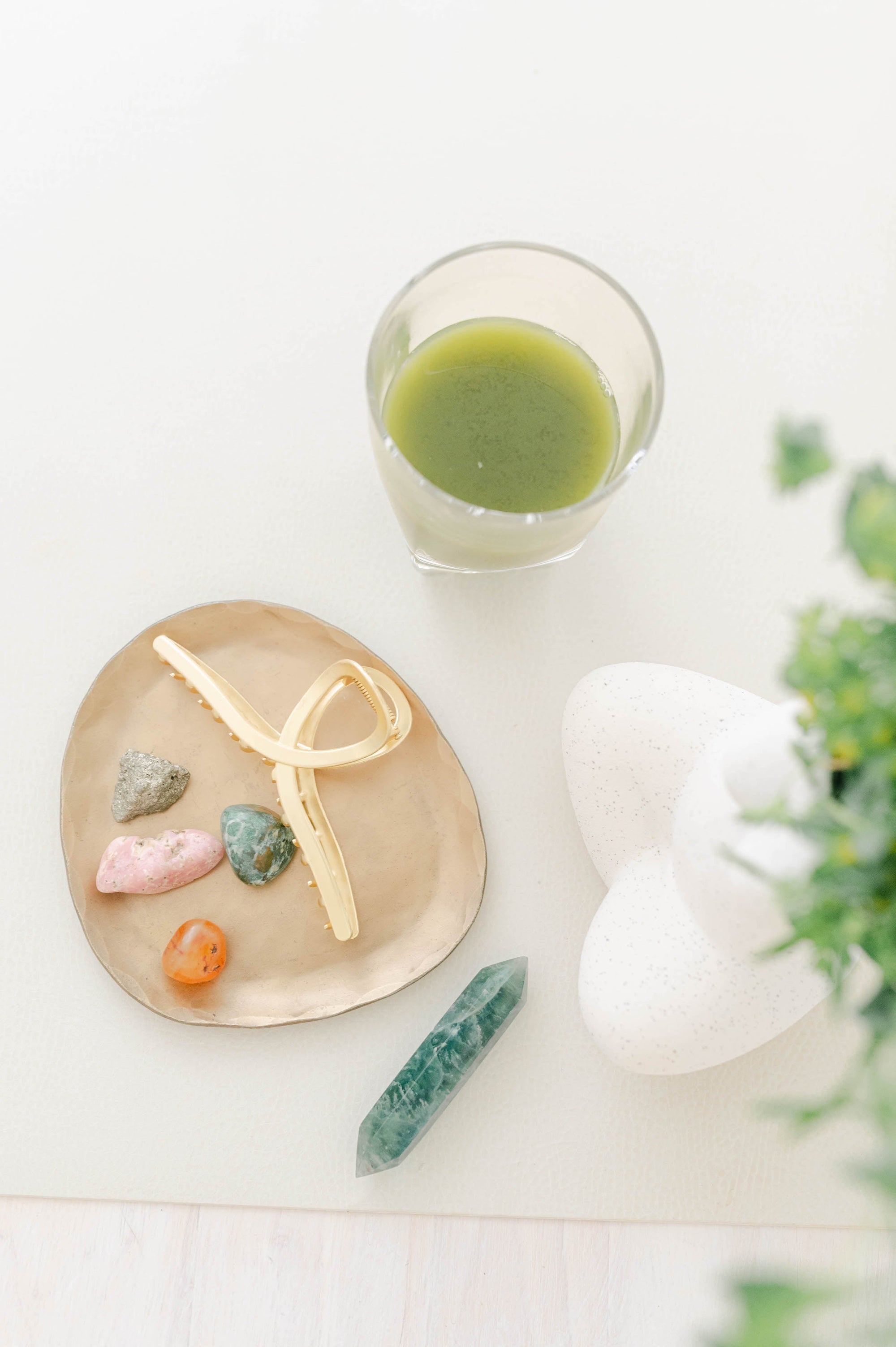Sadly, acne isn’t just for teenagers.
Few skin issues cause as much frustration as adult acne. Isn’t that something I should have had to deal with in high school? Unfortunately, post-adolescent acne, or acne that occurs after age 25-30, is incredibly common and has a multitude of causes and treatments.
Having a lot of options is never bad, but it does make finding the right one for you a little more tricky. Who hasn’t tried home remedies and drugstore tonics to solve their skin woes? Instead of applying topical after topical and risking the possibility of removing good bacteria (yes, good!) from your skin, there is a way to get to the root cause of your skin condition and determine if inflammation is the true culprit.
Understanding your skin
You already know this. Your skin is the largest organ of your body and is comprised of three layers: the epidermis, the dermis, and subcutaneous tissue. The top layer, the epidermis, acts as the main protective layer, keeping out harmful bacteria and germs that could cause infection. It’s also constantly working to regulate your internal temperature while continuously making new skin cells.
The dermis, the middle layer, is where collagen and elastin live alongside nerve endings and oil-producing glands called sebaceous glands. While our bodies are made of roughly 60% water, it’s a constant balancing act for our skin to regulate how much additional water comes through our skin. Those oil glands help keep the water balance in check, acting as a necessary barrier.
The final, deepest layer of our skin is the hypo-dermis or subcutaneous tissue. This fatty layer helps to protect our muscles and joints. The nerve endings and glands that come through the dermis are connected to the hypo-dermis and branch out into the rest of the body, keeping the skin connected to the rest of our systems.
These three layers of the skin work together to keep your body safe and healthy, making a carefully calibrated ecosystem. Interior disruptions to your health can make an impact that reverberates to the epidermis layer.
Getting to the root cause of adult acne
So what kinds of disruptions can impact your skin and lead to adult acne? I
Teenage skin has a bad reputation for a reason. As the body goes through hormonal changes, sebum glands produce more moisturizing oil, and that oil can clog pores and trap bad bacteria, creating the perfect conditions for acne.
Those teenage hormone spikes continue through adulthood in the form of menstrual cycles, pregnancy, or even age-related testosterone fluctuations. But if the endocrine system , which is responsible for producing those hormones, experiences duress, your hormone levels will fluctuate in a way that has nothing to do with regular bodily functions. Triggers like thyroid disease, diabetes, and stress can send hormone production into overdrive, which can result in acne. This is where we begin to truly understand the root cause of adult acne.
The inflammation connection
When your body experiences an illness or an outside toxin of some kind, your immune system will send out inflammatory cells to combat and protect whatever area might be affected. But if an illness is left untreated, those inflammatory cells might begin wandering around the body looking for areas to “save,” and the build-up of those cells will begin to impact other systems.
In the case of endocrine issues, a trigger like chronic stress (which so many of us struggle with) might be difficult to diagnose without an integrated medical approach like the combination of comprehensive blood work and input from a mental health professional. So stress will languish in the body, releasing an inflammatory response alongside an overproduction of hormones. This is likely the main cause of adult acne.
Find your acne triggers.
Of course, there can be other causes of adult acne, too. Certain medicines have been known to list acne as a side effect, like lithium, and barbiturates. Some cosmetics will clog your skin more than others, and cooking oil or oil from hair products can also be culprits. Being hyper-aware of the things you’re putting in and on your body will help you pinpoint where your adult acne could be originating.
But keeping track of all these potential triggers might seem like an overwhelming task. Many Holistic or Integrative Estheticians (like me!) are trained to look at your skin health holistically—honing in on not just the external but the internal factors that could be contributing to your acne. Part of that process involves simply listening to you describe your symptoms and the way you feel. You might not have realized that the combination of a new job, your favorite hair care product, and your penchant for a fantastic cheese board might all be contributing to your inflammatory and endocrine responses.
What you can do about adult acne today
You can check with your doctor, dermatologist, or esthetician about some of the following treatments:
-
Topical treatments
- Benzoyl peroxide, tazorotene, azelaic acid, salicylic acid (found in Botnia Toner), and dapsone are key ingredients in fighting the bacteria responsible for acne. Many over-the-counter creams and serums can be found with these ingredients. We recommend slowly introducing your skin to these treatments by starting with a small area every three days before committing to an everyday application.
-
Encourage cell turnover
- Help your skin regenerate with retinoids that hasten the development of new skin cells. While this might not address the root cause, it can help alongside other treatments. I always suggest going mild here with something like this. Stay tuned for a very special Retinol oil that I'm working on for even sensitive skin types.
-
Food reactions
- Keeping a food journal and noting acne flare ups could help you determine which foods might be contributing to inflammation and presenting as acne. Dairy in particular is known for having a direct correlation to inflammation, but it comes down to personal tolerance levels.Read the Labels: Your skincare routine could inadvertently be causing minute changes in your hormone levels via endocrine-disrupting chemicals. Bisphenol A (BPA) and alkylphenols target estrogen receptors and can be found in myriad cosmetics but with more and more companies making healthier ingredient choices there are sure to be some easy swaps you can make to reduce inflamed skin.
-
Address your stress
- This can feel like such a mountain to climb, but setting realistic goals for mental wellness can start small and have a big impact. Ensure you’re getting enough sleep make time for daily movement, find joy in seasonal foods and prioritize relaxation. You’ll begin to heal your inflammation and slow your over-producing endocrine system just by treating yourself well.Read the Labels: Your skincare routine could inadvertently be causing minute changes in your hormone levels via endocrine-disrupting chemicals. Bisphenol A (BPA) and alkylphenols target estrogen receptors and can be found in myriad cosmetics but with more and more companies making healthier ingredient choices there are sure to be some easy swaps you can make to reduce inflamed skin.
-
Read the labels
- Your skincare routine could inadvertently be causing minute changes in your hormone levels via endocrine-disrupting chemicals. Bisphenol A (BPA) and alkylphenols target estrogen receptors and can be found in myriad cosmetics, but with more and more companies making healthier ingredient choices (finally), there are sure to be some easy swaps you can make to reduce inflamed skin.
-
Be careful with antibiotics
- Antibiotics might seem like a natural defense to harmful bacteria, but often they can remove the good bacteria that lives in our bodies. Stripping these can lead to unwanted side effects and even exacerbate adult acne. Consult your doctor before using antibiotics to treat acne.
I hope this was helpful. Feel free to email your questions. Or, book one of my facial treatments and let's get to the root cause of your adult acne together.
Xo, Jennie
Source: Parsley Health Blog



